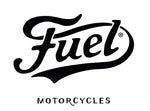The importance of single layer in motorcycle pants

What does a single layer mean?
When talking about a single layer when it comes to motorcycle pants, it refers to the merging of an abrasion-resistant fiber into the fabric of the pants. A strong fiber combined with a fabric fiber creates a woven material that is much stronger than cotton on its own.What is the difference between single-layer or lined (double layer) pants?
When motorcycle pants first came on the market, they consisted of two layers; a denim outer layer and an abrasion-resistant inner lining, such as Kevlar. Sometimes, a third layer of mesh can be added to protect the skin from the abrasive material and make them more breathable.In recent years, another option has emerged: single-layer pants. As the name suggests, single-layer fabric has only one layer, where the protective fiber is woven into the material instead of as a separate layer.
What are the benefits of a single layer?
Double-layer pants are pretty heavy and bulky and very hot in summer. The difference with single-layer motorcycle pants is quite noticeable: they are generally lighter and therefore offer more comfort. They are ideal for riding as you won’t get as hot, and they are great for when you get off the bike, too.
Single-layer pants are also generally slimmer and not as bulky as double-lined ones, and allow for a comfortable fit. They are also more breathable, which is perfect for hot days on the road.
The fabric in a single-layer pant is more flexible and perfect to wear also when you’re not on the bike. The abrasion-resistant fiber in the fabric still keeps you safe, and here at Fuel, we have the certification to prove it.











